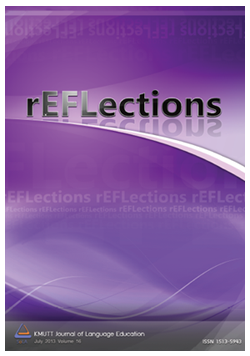Assessing Students’ Pronunciation: Voices from Native English Teachers (NETs) and Non-native English Teachers (NETs)
Main Article Content
Abstract
This research study investigates and compares the operational criteria of three native English teachers (NETs) and three non-native English teachers (NNETs) when assessing English pronunciation of Thai learners. Supposedly, all six participants had already developed their own criteria of evaluating and grading pronunciation by the time the research study was completed. The main research instrument used throughout the study were individual semi-structured interviews conducted with all participants. The findings revealed that both NETs and NNETs considered intonation/rhythm, stress and grammar important aspects and features of pronunciation in English. Nevertheless, the findings illustrated that NNETs also considered other non-pronunciation features per se, such as visual clues, which according to them played a contributory role in terms of how the message is being delivered to the listener. In this regard, NNETs assessed students’ pronunciation on a broader level or more holistically than their native counterparts and most of them included overall intelligibility as a separate category throughout their assessment practices. According to them, successful communication thus takes place in the presence of other non-verbal clues or paralinguistic features of human behaviour, such as body language, eye contact, facial expressions, voice and gestures amongst others, which go hand-in-hand with pronunciation and largely contribute to the clarity of the message being conveyed.


